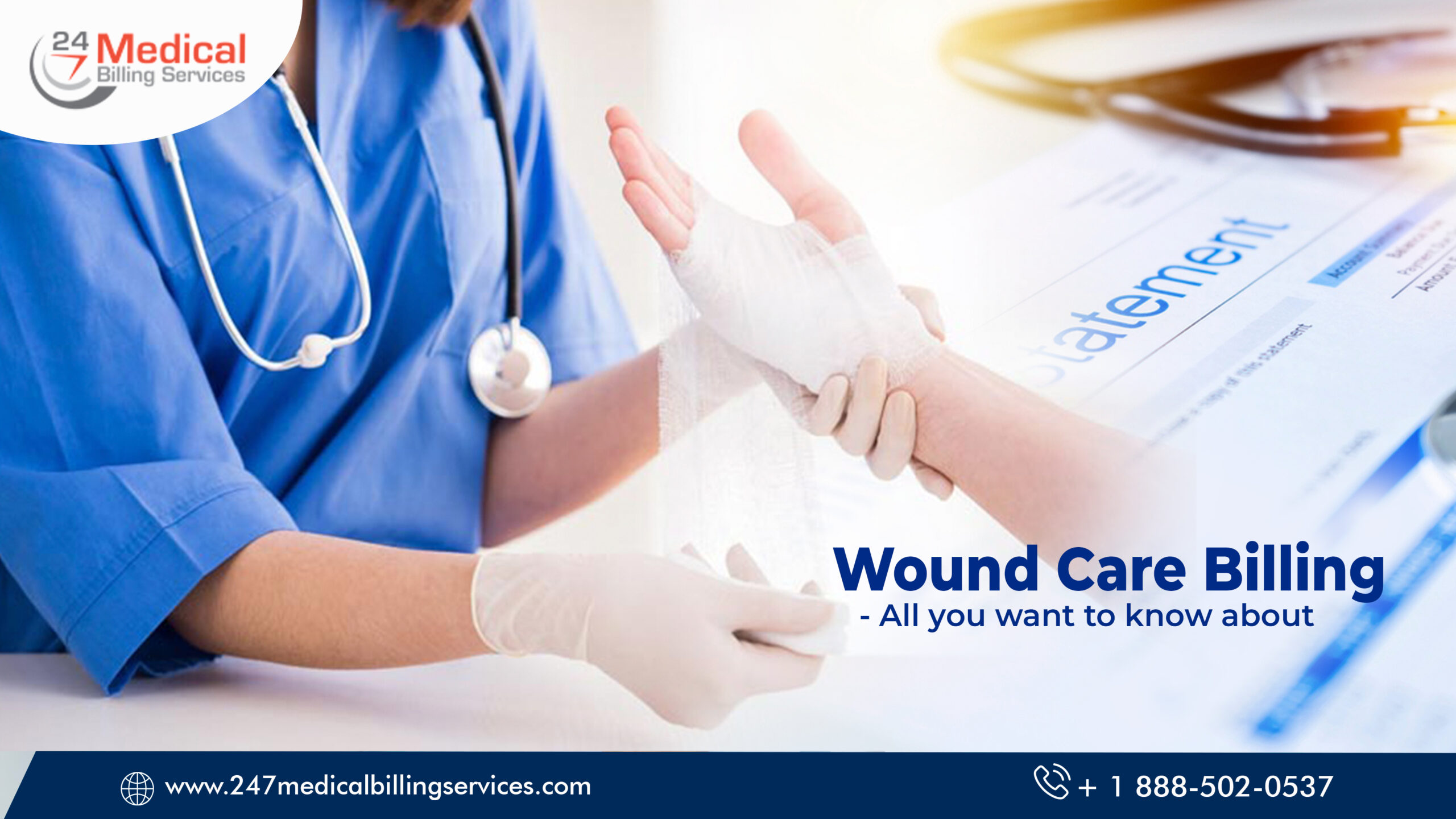
Wound Care Billing - All you want to know about!
Did you know?
Nowadays, health care service providers are getting a large reimbursement percentage from wound care services.
But simultaneously, chronic wounds from chronic diseases such as obesity & diabetes are more likely to damage the skin and can be covered only under accurate wound care medical billing and coding.
In fact, other wound care treatments like the cleansing, assessment, debridement, reapplication and removal of the wound dressing is also reported and reimbursed with appropriate wound care billing & coding techniques.
Amidst all these facts, the biggest issue is that many in-house wound care billers and coders found themselves stuck in the medical billing and coding for the wound care and the various other guidelines.
Here are the various guidelines that you should know about wound care billing services:
Guidelines to be followed for CPT codes 97598, 97597 and 11042-11047:
- Change of dressing in case of debridement and other wound care treatment does not require to be billed.
- The active treatment procedures and debridement treatment services get billed whenever a dressing is required at a large scale despite the primary dressings or substitutes for skin linked with the second dressings.
- The wound debridement’s recurrent in nature require billed as CPT codes 97598. They can also be billed as 97597.
- The CPT codes 97598 and 97597 can be used if the necrotic cellular, a devitalized tissue, is present. A cleansing of a wound does not signify a debridement treatment service.
- For reporting the medical treatment services like cutting of calluses, bacterial washing, lesions having fungal debris, the abscess along with the paronychia getting drained or incision, nails that need to be debrided or trimmed, surgery of the severe acne, debridement of the burnt area, and warts getting destructed; the CPT codes 11042 - 11047 are not supposed to be used. Instead, these medical procedures should be shown as the service offered.
Guidelines for PM&R codes, i.e. Physical Medicine & Rehabilitation codes - 97597, 97598, 97602:
- Suppose therapists offered wound treatment services; then there is a need for a a therapy plan certified by the physician based on in-depth evaluation with a signature of an NPP or a treating physician.
- The wound care treatment, like no use of anaesthesia during non-selective debridement, revitalized tissues getting removed from the wound, wound assessment or topical applications are payable as per the sessions, not separately.
- There must be an HCPCS billed to support the documentation.
- The payment gets involved for non-contact, ultrasound treatment which is non-thermal, and low-frequency treatment in the same wound, along with the active care of the wound under the CPT codes for wound debridement 11042-11047, 97597, 97598 and CPT codes 97597-97606.
- If no other active or ongoing wound treatment, then the no-contact, ultrasound treatment non-thermal in nature and low-frequency treatments get billed separately.
Wound Care Treatment Services Include Evaluation/Re-assessment:
- The medical billers and coders can report E/M if given wound care, even if they performed an identified treatment service during of wound care. Also, the E/M treatment service should be different from the scheduled appointment and need evaluation & medical treatment apart from the wound care.
- If E/M service and wound care are reported separately, even if the separate medical management and evaluation is offered by other health care workers or by the same physician on the same day, Modifier 25 is used to be billed.
The essentials for the wound care billing & coding documentation:
- A complete description of the wound is required. From size, drainage, appearance, presence of infection, appearance or any other underlying medical problem of the wound should be attached.
- The description of the method for the debridement amongst the nippers, scalpel, curette or scissors and a complete description about the in-depth tissue layer that was debrided or removed during the medical procedure should be mentioned.
- The documentation should report precise information on how the tissues were cut.
- A piece of detailed information about the healing process like the required dressing, the progress time of the wound, appointments and the future visits required.
- Thorough information about the healing process, like how much the wound has been healed. A step-by-step overview to identify any other new medical condition like antibiotics, biopsy, future testing, podiatric consultation or vascular interventions.
Additional Tip: Wound Care Billing & Coding Errors to Prevent Code Denials:
- Correct usage of modifier 25.
- Not considering additional codes such as dimensions of the debrided area.
- Inaccurate reporting of non-selective and selective debridement areas.
- Not coding the in-depth layer of debridement while reporting various layers of debrided area.
- Reporting separate wound dressing and not reporting under E/M service.
Still in Trouble?
There are instances where wound care experts find themselves getting challenged. The matter of the fact is that patients and the wound care medical billing require the same level of care. Moreover, the regulations & rules by CMS, coding modifiers and documentation seem hard to be handled. Whereas on the other hand, the market for wound care is up-scaling where the healthcare professionals are facing huge wound care billing & coding challenges. However, this challenge can be solved by outsourcing wound care billing to a team of 24/7 Medical Billing Services professionals.
Read more: Why Outsourcing Wound Care Billing Can Help Your Practice?


.png)
